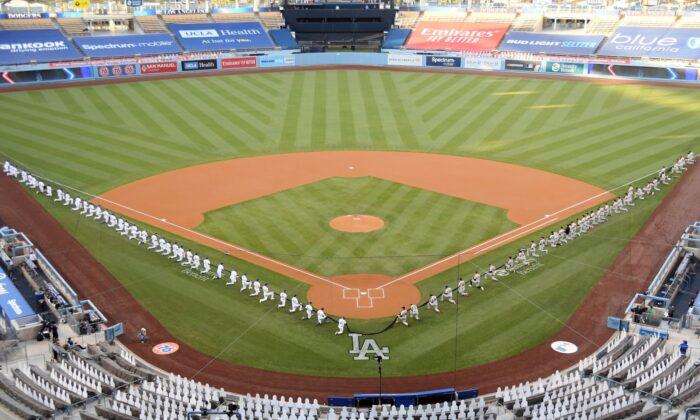With three Southern California teams currently in a major sport championship series (the Los Angeles Lakers) or the playoffs (the San Diego Padres and the Los Angeles Dodgers), they’re particularly fun right now for sports fans and franchises in Southern California.
However, this year, the economic benefit that typically comes with a great winning season isn’t happening.
Looking at the three teams currently in their respective postseasons, the Southern California economy has already sustained an “opportunity cost” of more than $350 million in lost ticket sales, plus an additional estimated loss of $194 million in food and beverage sales.
An “opportunity cost” in this case is the revenue that couldn’t be gained because stadiums were closed. More generally, an “opportunity cost” is the cost associated with not choosing a particular opportunity. A typical opportunity cost faced by most individuals is wages lost from choosing not to work. The opportunity cost, or the economic value that wasn’t created by the venues of the three teams, has been more than $540 million—i.e., just over a half-billion dollars in lost revenue.
That doesn’t take into account lost sales of tickets, and food and beverage, at the stadiums and arenas where the Los Angeles Rams, the Los Angeles Chargers, the Los Angeles Kings, the Los Angeles Clippers, the Anaheim Ducks, or the Los Angeles Galaxy play.
It’s likely that the combined economic impact of Southern California sports teams not being able to play in front of a live audience in 2020 has been well over $1 billion.
Additionally, sports bar owners have taken a major hit as pandemic lockdowns or other restrictions have kept fans from visiting their local watering holes to cheer on their teams.
However, unlike some other entertainment venues, such as movie theaters or theme parks, sports franchises at least can earn some revenue by selling rights to broadcast/telecast their games to cable companies or other television outlets.
In 2020, sports franchise owners and their league administrators, faced with the prospect of no stadium-related revenues this year, did what they could to maximize TV revenues.
According to the Sports Business Journal, the three top basketball teams (Lakers, New York Knicks, and Golden State Warriors) can expect to take in $3 million to $4 million in ticket sales for every home game plus an additional $750,000 in food and beverage sales. Statista.com reported that in 2019, the Padres had $63 million in gate receipts and the Dodgers had $185 million. We can assume the Padres typically make about $750,000 per game on food and beverages for every home game, while the Dodgers, who typically draw much larger crowds, achieve sales of $1 million in food and beverages.
A typical basketball season is 80 games and a typical baseball season is 162 games, with about half of the regular-season games played at home.
So far in 2020, the Lakers have played 22 postseason, the Padres have played eight, and the Dodgers have played three.
Sports fans in Southern California are undoubtedly cheering the success of their local sports teams, but having to do so from the safety of their living rooms has likely taken a heavy toll on the local economy.





